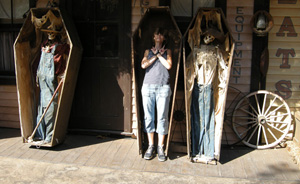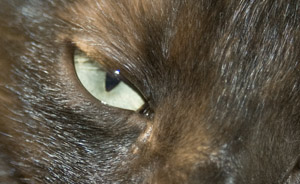Camera Shots
Extreme long shot
Extreme long shot
 An extreme long shot is most commonly used as a scene- setting, establishing shot. Often shot outside, eg the outside of a building, or a landscape. There is very little detail visible in the shot as its intention is not to give information but instead a general impression of the setting.
An extreme long shot is most commonly used as a scene- setting, establishing shot. Often shot outside, eg the outside of a building, or a landscape. There is very little detail visible in the shot as its intention is not to give information but instead a general impression of the setting.Long shot
A long shot generally represents the image as aproximately 'life' size, ie corresponding to the real distance between the audience and the screen in a cinema. This shot will incude the characters entire body, with the head near the top of the frame and the feet near the bottom. While the focus is on characters, plenty of background detail still emerges.
Medium shot
A medium shot will focus on the character from the knees/ waist up. This shot is often used for dialouge scenes or to show some detail of action. In a medium shot background detail is minimal this is often because the location has already been set earlier in the scene. An over the shoulder shot (used to film conversations over one of the characters shoulders) is a popular medium shot often used in films.
Close up
A close up shot focuses on a certain object or person and shows very little background. A close up shot magnifies the object representing its importance, be it words written on paper, or the expression on someone's face. Close ups can be very intimate shots as in reality there are very few people we would let get that close to our face. Close up shots can make us feel very comfortable or uncomfortable towards a certain character.
Extreme close up
An extreme close up shot is a very artificial shot in the sense of it is able to magnify beyond what the human eye is capable of in reality. An extreme close-up of a face, for instance, would show only the mouth or eyes, with no background detail whatsoever. Extreme close ups are most commonly used for dramatic effect.
Birds eye view
 As the name suggests a 'birds eye angle' films in the similar perspective of a bird flying in the sky. This is a very strange and un natural angle, however this angle can put the audience in a godlike position, looking down on the action. This angle is best used to make people look insignificant, ant like, part of a wider scheme of things.
As the name suggests a 'birds eye angle' films in the similar perspective of a bird flying in the sky. This is a very strange and un natural angle, however this angle can put the audience in a godlike position, looking down on the action. This angle is best used to make people look insignificant, ant like, part of a wider scheme of things. High angle
A high angle shot is not as extreme as a birds eye view. Camera is positioned over the object at a high angle looking down. This shot is best used to make the object photographed seem smaller, and less significant.
Eye level
Eye level camera angles are a fairly basic and neutral shot. The shot perceives that the view is from a human actually observing the scene. The camera is often placed aproximately five to six feet from the ground.
Low angle
Low camera angles are useful for increasing height and showing a sense of superiority to an object. Low angles help give a sense of confusion to a viewer, of powerlessness within the action of a scene. The background of a low angle shot will tend to be just sky or ceiling, the lack of detail about the setting adding to the disorientation of the viewer.
with reference to: http://www.mediaknowall.com/camangles.html




No comments:
Post a Comment